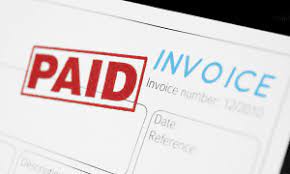10 KPIs for Effective Accounts Payable Management
 In today’s business landscape marked by supplier shortages, demand fluctuations, increased operating costs, and liquidity challenges, the Accounts Payable (AP) department has emerged as a central driver of business profitability. And as AP’s significance has continued to grow, it has become crucial for it to focus on optimizing processes and ensuring accountability.
In today’s business landscape marked by supplier shortages, demand fluctuations, increased operating costs, and liquidity challenges, the Accounts Payable (AP) department has emerged as a central driver of business profitability. And as AP’s significance has continued to grow, it has become crucial for it to focus on optimizing processes and ensuring accountability.
Implementing the right set of Key Performance Indicators (KPI)s can provide a simple and effective means to achieve these objectives. Unfortunately, though, AP decision makers often struggle to identify the appropriate KPIs and lack the necessary tools to track them effectively. Recognizing this challenge, 55% of AP leaders in a recent study have prioritized the improvement of financial reporting and analytics. These metric-tracking tools have become increasingly important as organizations look to the future.
This blog post aims to help AP departments unlock their full potential. It emphasizes that when used correctly, KPIs can be transformative tools in achieving this goal.
Quality Over Quantity: Selecting the Right KPIs
While there are countless KPIs that an AP department can track, more is not necessarily better. It is crucial to focus on quality rather than quantity – concentrating on a select group of KPIs that have the most significant impact on your company’s performance.
Given the current business landscape and the impact of the pandemic economy, AP’s strategic value has further increased. As a result, the metrics that were previously tracked may no longer provide an accurate view of AP performance. Therefore, it is necessary to reevaluate the KPIs being measured and ensure they align with the shifting goals and priorities of finance leaders.
The following are ten essential KPIs that can drive effective AP management:
Cost to Process a Single Invoice
In today’s cash-conscious environment, AP departments must understand the expenses associated with processing each invoice and develop strategies to mitigate costs. This KPI requires a comprehensive assessment of all AP processing expenses, including routing costs, copying and follow-up expenses, staff salaries, managerial overhead, and IT support. Research indicates that organizations with little automation incur an average cost of $10.95 per invoice, while those with mature automation processes achieve an average cost of $2.25 per invoice.
Time to Process a Single Invoice
Time is a valuable asset, and maximizing AP’s profit-generating potential requires identifying and resolving bottlenecks in the invoice processing workflow. Measuring the time it takes to process a single invoice is a valuable KPI for assessing the value added or wasted by the AP department. Organizations with little automation experience an average processing time of nearly 12 days per invoice, while those with mature automation processes achieve an average processing time of slightly more than 3 days per invoice, representing a 73% increase in efficiency.
Invoices Processed per Day per Full Time Equivalent (FTE)
Measuring staff productivity is a crucial step towards optimizing AP invoicing. By calculating the number of invoices processed per day per AP clerk, organizations can identify areas of improvement within their operations. Although there is no definitive market average for this KPI due to various factors, it provides insights into invoice volume, employee activity, and problematic suppliers.
Invoices Linked to a Purchase Order (PO)
This KPI helps gauge the efficiency of the AP process by tracking the percentage of invoices linked to a purchase order. Invoice validation is a critical step in the approval process, and delays caused by discrepancies with the PO can significantly impact AP efficiency. The market average for the percentage of invoices linked to a PO is 44.3%. However, organizations considered “best-in-class” with high levels of automation achieve an average of 80.2%.
Invoice Exception Rate
Invoice exceptions are a major challenge for AP clerks, consuming significant time and resources. Tracking this KPI helps maintain process efficiency by identifying the causes of exceptions, such as discrepancies in PO and invoice data, missing or incorrect POs, and bottlenecks in the approval workflow.
Straight-Through Invoice Processing
Straight-through or “touchless” processing, where no manual intervention is required, is significantly faster and cheaper than manual methods. Organizations should measure and improve this KPI to maximize margins and efficiency. As a matter of fact, recent studies show that highly automated “best-in-class” organizations achieve a straight-through processing rate of 67.1%, while others achieve only 21.3%.
Suppliers That Submit Invoices Electronically
Encouraging suppliers to submit invoices electronically accelerates processing and streamlines business interactions. The adoption of electronic invoicing has increased by 25% in the past few years, driven by the pandemic’s impact on remote work. On average, organizations without automation receive electronic invoices from only about 40% of their suppliers, while top-performing AP teams receive invoices electronically from 60% of their vendors.
Early Payment Discounts Captured
Optimizing cash flow is crucial for businesses and capturing early payment discounts benefits both the paying company and its suppliers. Recent research shows a 15% increase in the number of businesses that capture early payment discounts, indicating a growing focus on maximizing savings and working capital.
On-Time Payments
Paying invoices on time helps avoid late fees and strengthens relationships with suppliers. Organizations with highly manual AP processes often struggle with on-time payments, requiring additional time and resources. Timely payments are associated with vendor trust and contribute to short-term cash flow and long-term bottom line health.
Days Payable Outstanding (DPO)
DPO is a more complex KPI that demonstrates AP’s value beyond invoice processing and helps justify department costs. It reflects the efficiency of a company’s cash flow strategy and how long it takes to pay suppliers. DPO can impact working capital and influence supplier perceptions of your company. To calculate it, simply divide Average Accounts Payable by Cost of Goods Sold multiplied by the number of days in the accounting period.
AP Transparency Through Real-Time Analytics & Dashboards
By focusing on KPIs like the 10 above, organizations can gain valuable insights into their AP performance, identify areas for improvement, optimize processes, and enhance overall efficiency.
Do keep in mind, though, that knowing what KPIs to measure is just part of the equation. Businesses also need metric-tracking technology to dig deep into their AP data to bring those KPIs to light. With today’s analytical tools AP cashflow, AP process performance, spend by category/volume/supplier, requests pending approval and numerous other AP functions can be easily assessed. Then pertinent insights from that data can be easily shared with key stakeholders using dashboards, reports and other methods.
